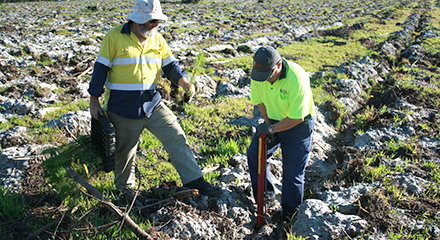Canada says it is a plan for meeting its climate change targets, as well as increasing the renewable resource used by the enormous Canadian timber sawmilling and processing industry. Source: Timberbiz
Natural Resources Minister Seamus O’Regan made the funding announcement Monday at a tree nursery in St John’s, saying the project will help Canada achieve its goal of net-zero greenhouse gas emissions by 2050.
“There is no path to net-zero carbon emissions that doesn’t involve our forests,” Mr O’Regan said.
“Trees increase our community’s long-term resilience to climate change. They reduce the likelihood of flooding and the risk of wildland fires.”
Mr O’Regan said the project is “an endeavour of unprecedented scale and size” creating 4300 “good jobs”.
Roughly 600 million trees are already planted each year in Canada.
Australian Forest Products Association CEO Ross Hampton said Canada’s decision emphatically endorsed the Australian Government’s target for one billion new production trees announced two years ago.
“Canada’s forest industry is about twice as large as Australia’s, so the Australian Government’s one billion new production tree planting target, which is half the scale of Canada’s, is not out of proportion. Both nations plan to plant all of these new trees by 2030,” Mr Hampton said.
“The difference between the countries is that whilst Canada is investing more than $3 billion in the program, in Australia, the Government is relying on creating the right conditions for private investment to achieve the growth needed.
“The most important action the Government can take is to ensure all the Regional Forestry Hubs around Australia are announced and enabled with start-up funding as soon as possible so that planning can take place to ensure the planting of the ‘right trees at the right scale in the right places’.
“The second enabling activity is the modification of regulations to enable farmers, landowners and others to more easily access carbon credits obtained from the Emissions Reduction Fund reverse auctions,” Mr Hampton said.
He said that Assistant Minster for Forestry Jonno Duniam and Energy and Emissions Reduction Minister Angus Taylor were to be congratulated for achieving some of these necessary changes already.
But it was vital that red tape reforms continued, and that pressure was brought on any States which were blocking the planting of new trees.
“It remains bizarre for example that in part of the largest tree growing area in Australia, the South West Victorian side of the Green Triangle, the Victorian government is yet to allow the Federal Government to declare the area exempt and deliver the carbon benefits of new trees to farmers and landowners,” Mr Hampton said.
In July the Federal Government announced that four-and-a-half initial Regional Forestry Hubs were declared exempt and able to fully participate in the Carbon Farming Initiative (CFI), allowing new production tree plantings to bid for carbon credits under Emissions Reduction Fund (ERF) auctions.
The initial declared hubs are in SW Western Australia, Northern side of Tasmania, NE New South Wales, South West Slopes of New South Wales, and the South Australian side of the Green Triangle.
Inexplicably, the declaration did not extend to the Victorian side of the Green Triangle, meaning south-west Victorian farmers and landowners are restricted from registering new production tree planting projects and from bidding in the ERF.






